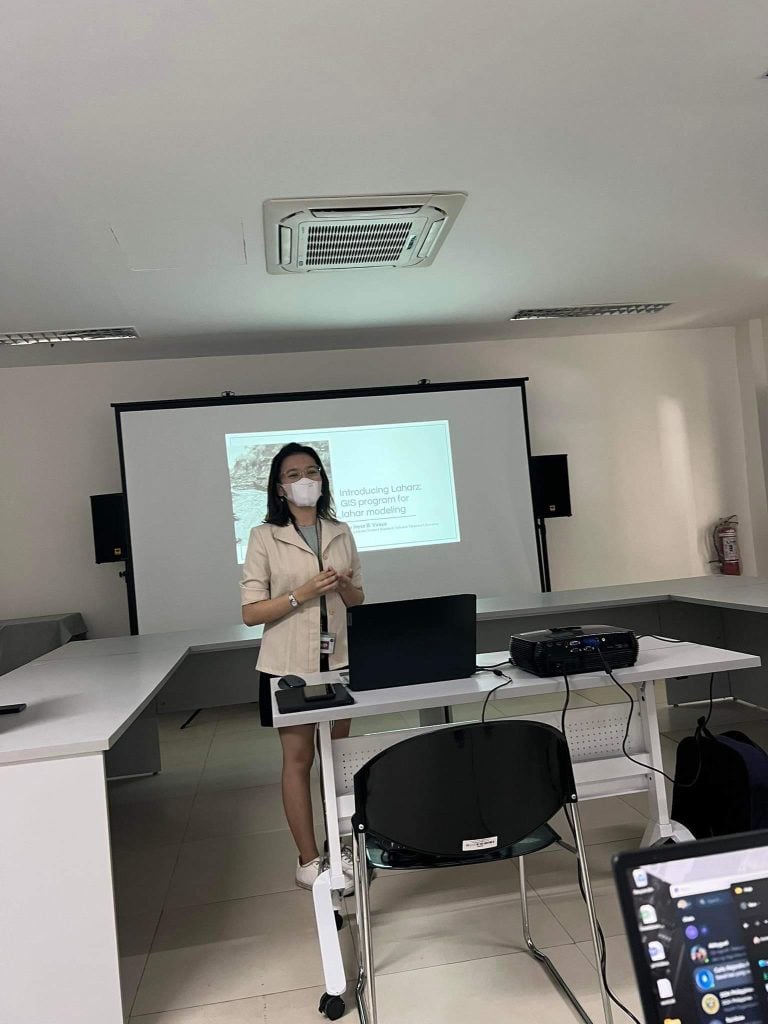
The UP RI Nationwide Operational Assessment of Hazards (NOAH) Center’s Hazards Assessment Team (HAT) underwent lahar modeling training using LaharZ software last May 10, 2023, led by Ella Virayo, an undergraduate student affiliated with the Volcano-Tectonics (VTec) Laboratory of the University of the Philippines National Institute of Geological Sciences (UP NIGS).
Lahar is a natural process that is described as a hot or cold mixture of water and rock fragments that move rapidly down the slopes of volcanoes. This hazardous process may impact properties and lives on its path. Several methods may be employed to understand the mechanism, triggers, and forecasting of Lahar and Debris flows. One such software is LaharZ, a modeling software developed by the United States Geological Survey (USGS) which calculates the proximal hazard zone. It is a Python-based program built for Geographic Information System (GIS) over a topographic model and calibrated using real-world scenarios of debris flows. The training taught the HAT members how to utilize LaharZ in mapping inundation zones. Ella Virayo presented a general overview and methods of the GIS tool and led the team through a demonstration of the Mayon lahar simulation.

Due to the software’s ease of use and rapid processing, the HAT members have found the software to be a prospect for future use in modeling lahar and debris flows. Further testing of the software using various lahar scenarios from active volcanoes in the Philippines are in the pipeline.
